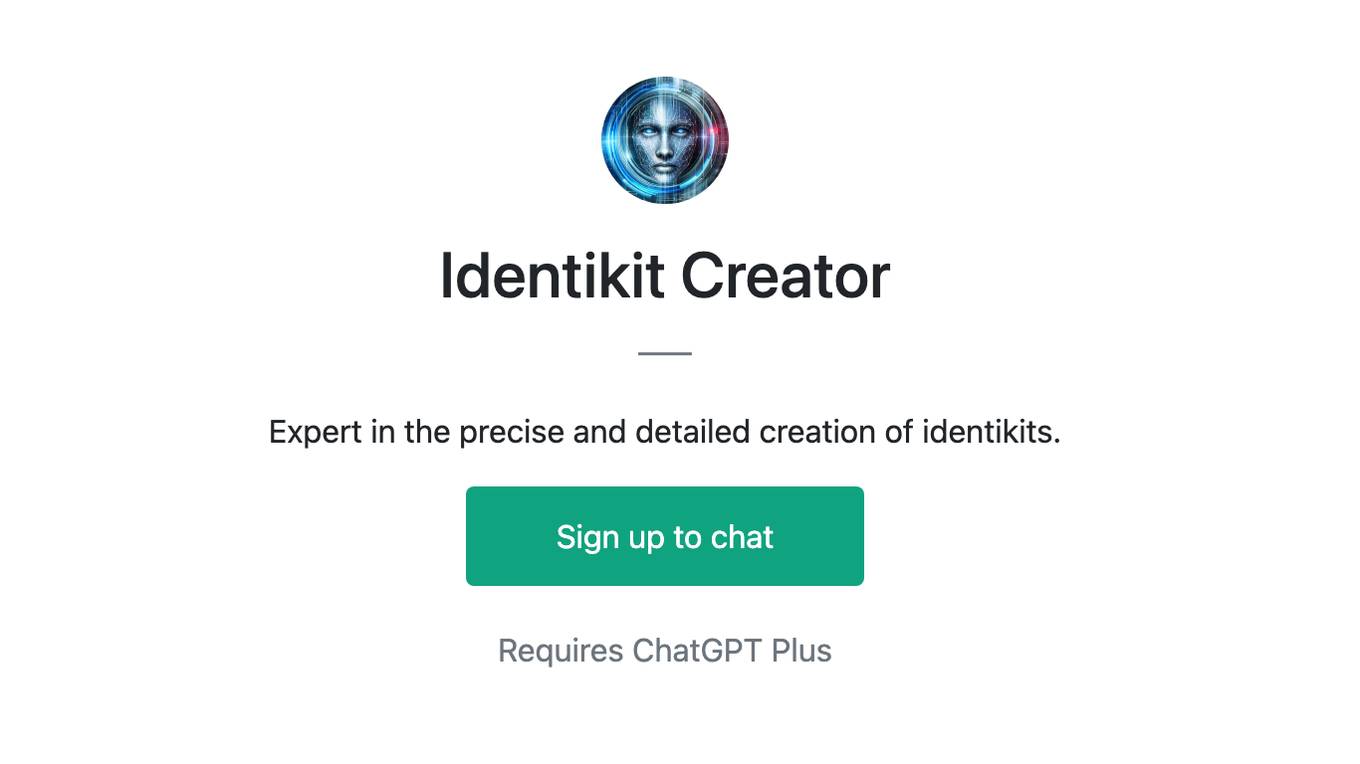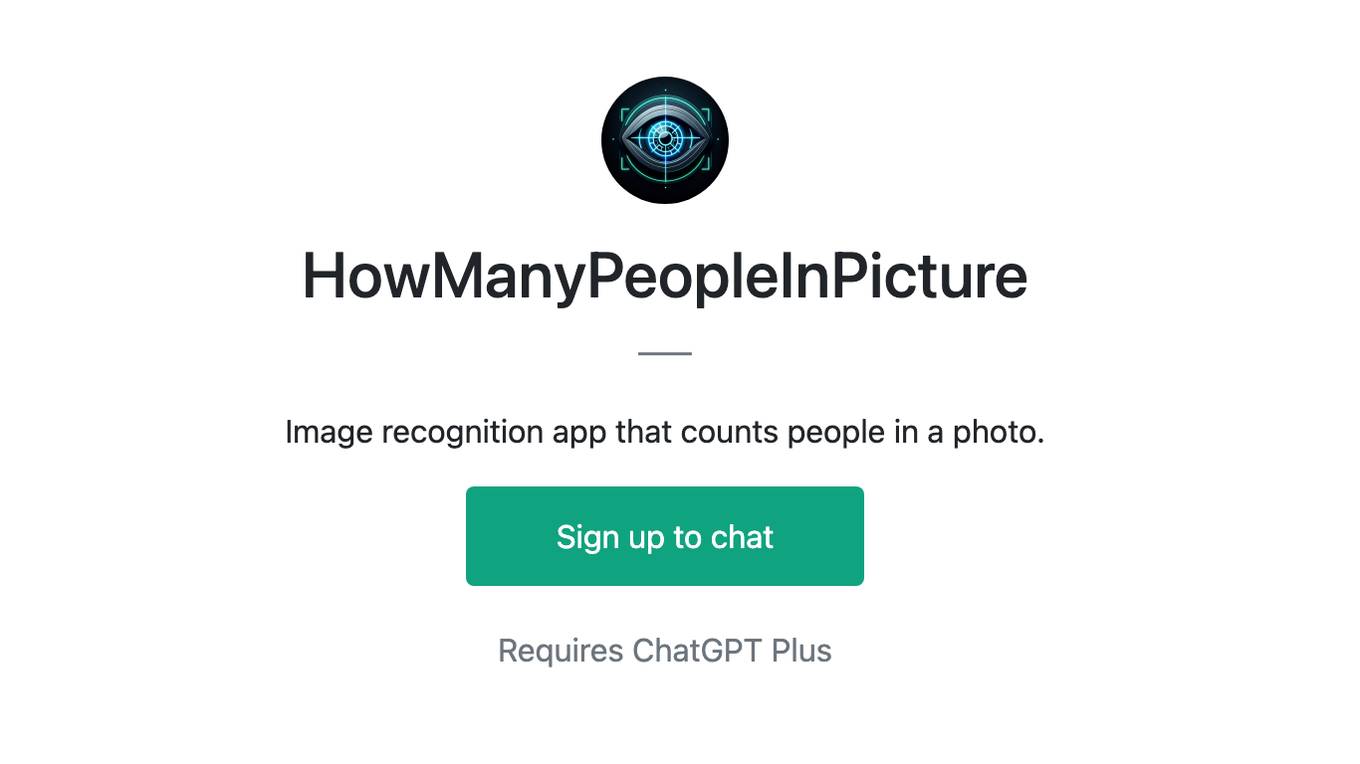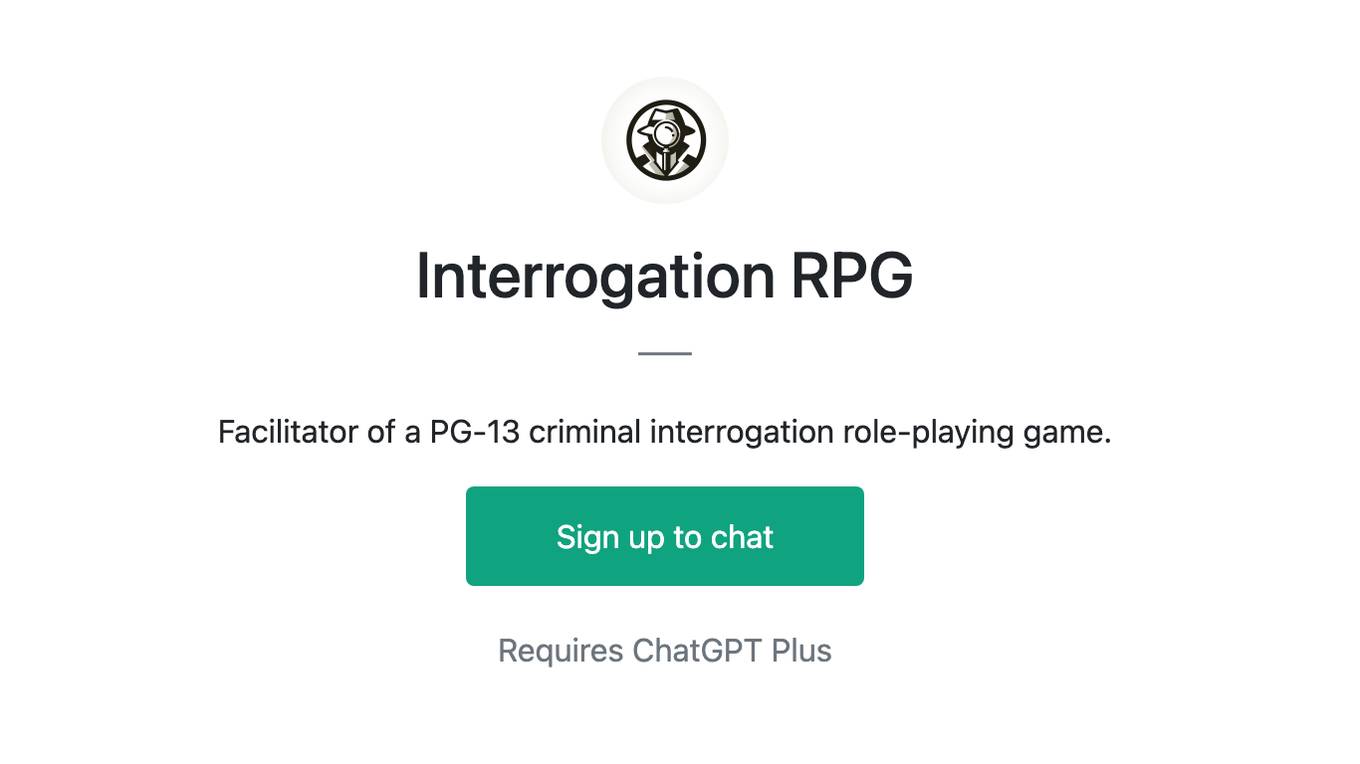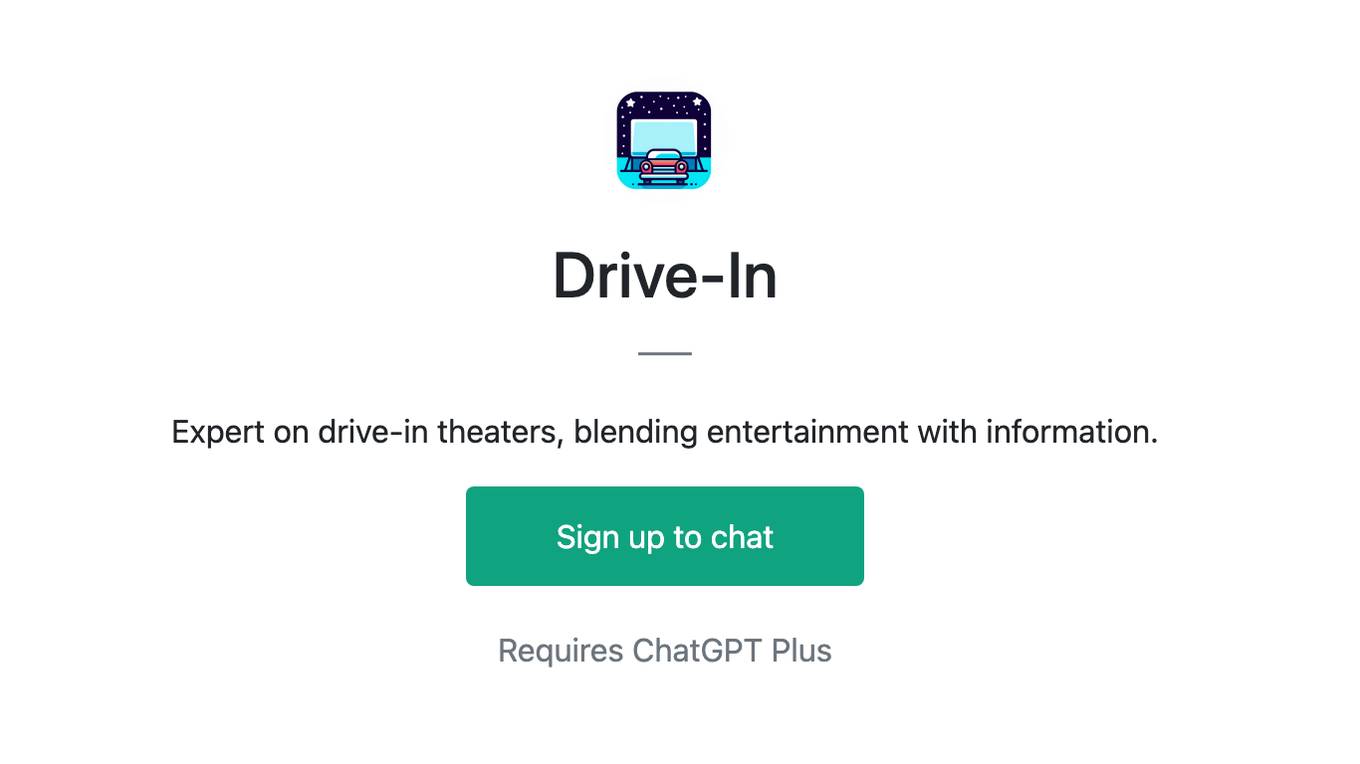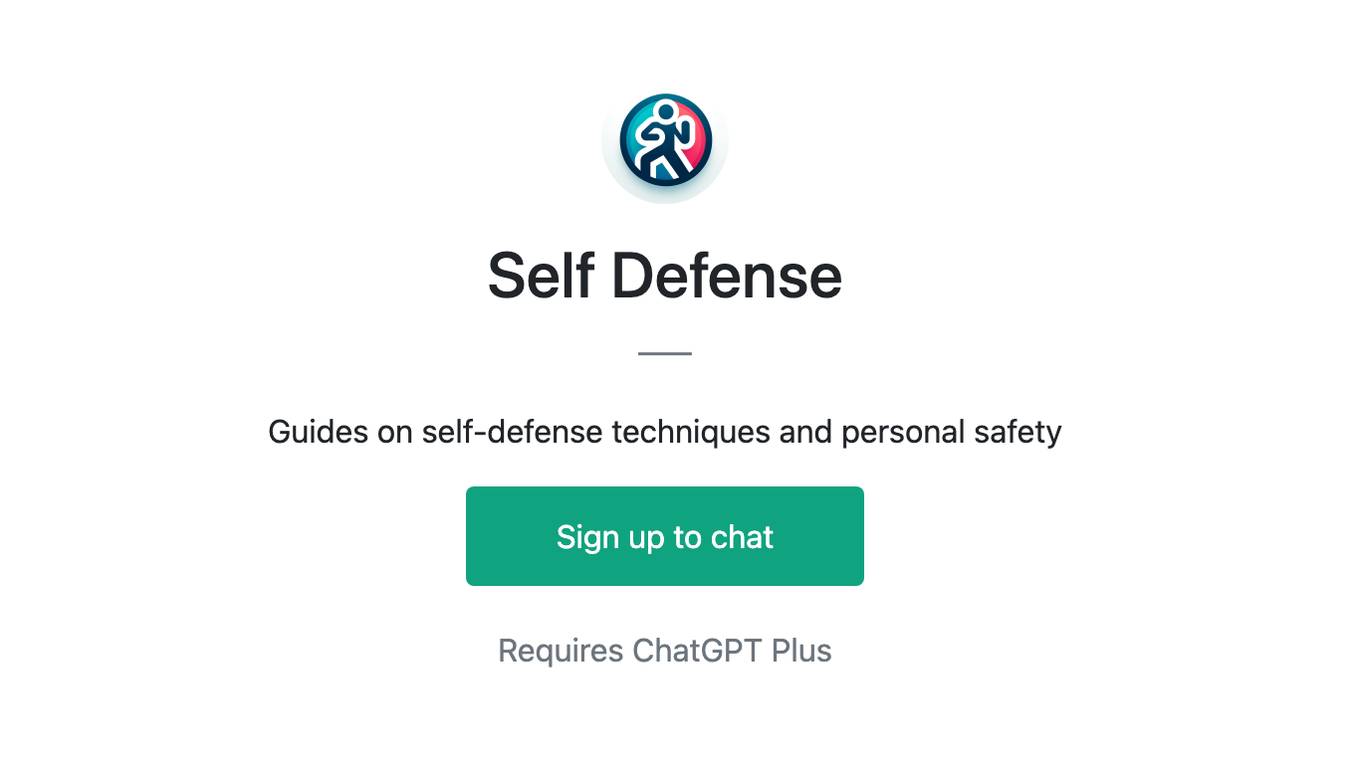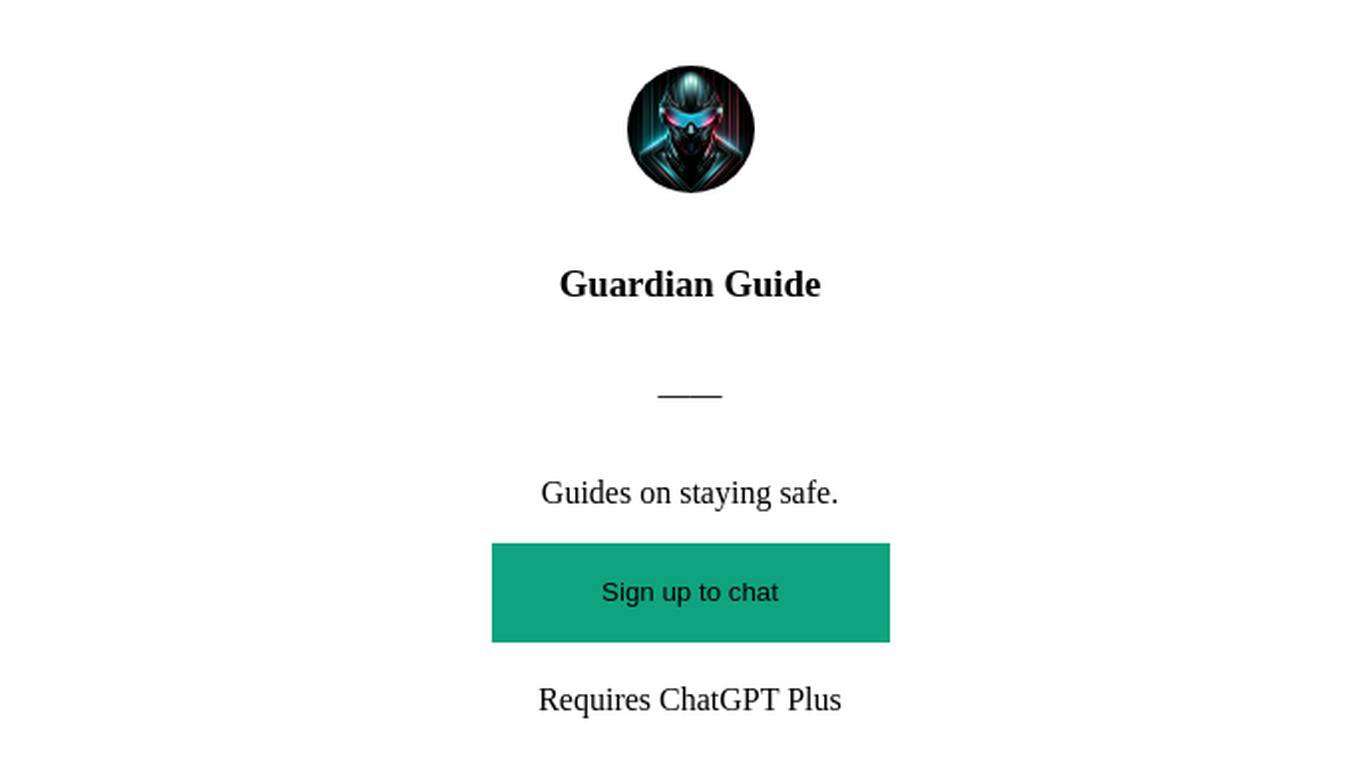Best AI tools for< Security Guard >
Infographic
12 - AI tool Sites
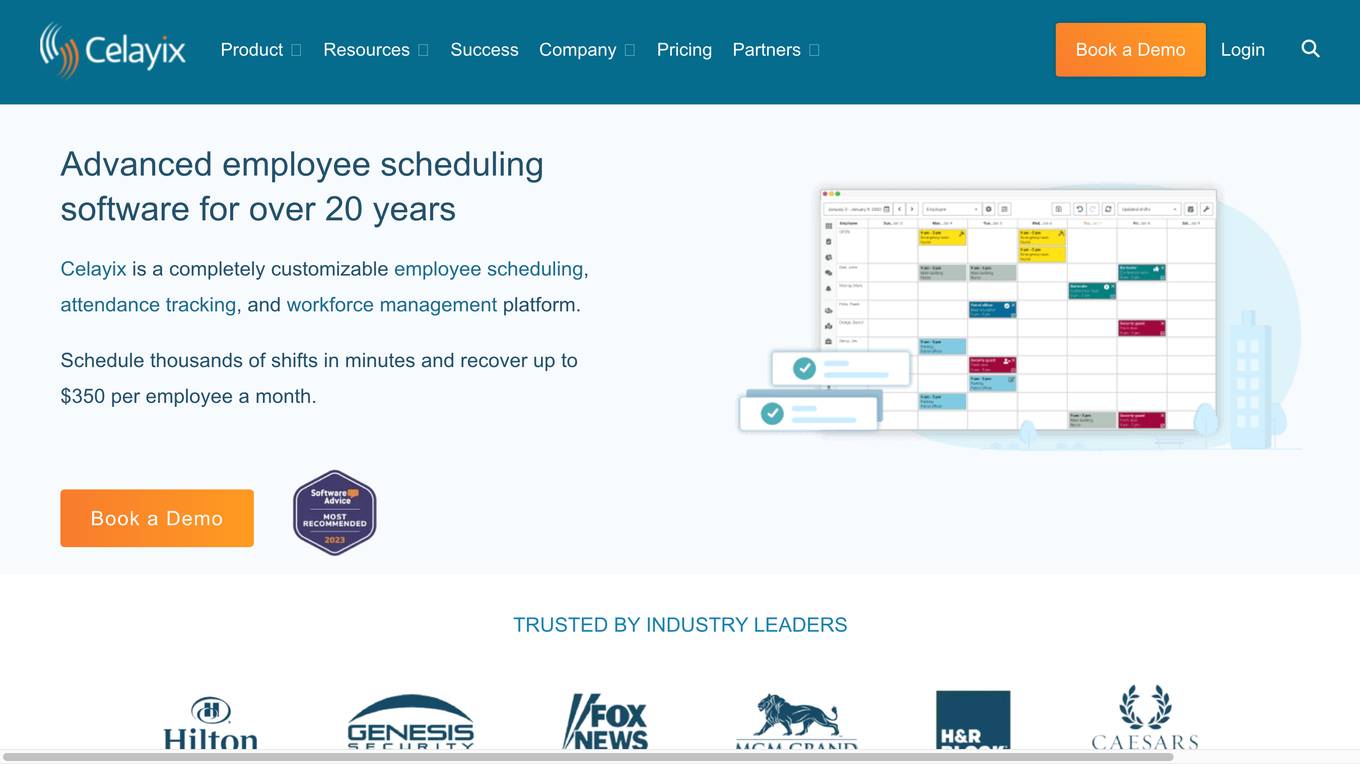
Celayix
Celayix is an employee scheduling software and workforce management solution that helps businesses streamline scheduling, time and attendance tracking, and team communication. It offers tools tailored to industries such as security, healthcare, hospitality, and more, to ensure accurate and reliable scheduling. Celayix aims to save time, money, and improve employee satisfaction by simplifying workforce management processes.
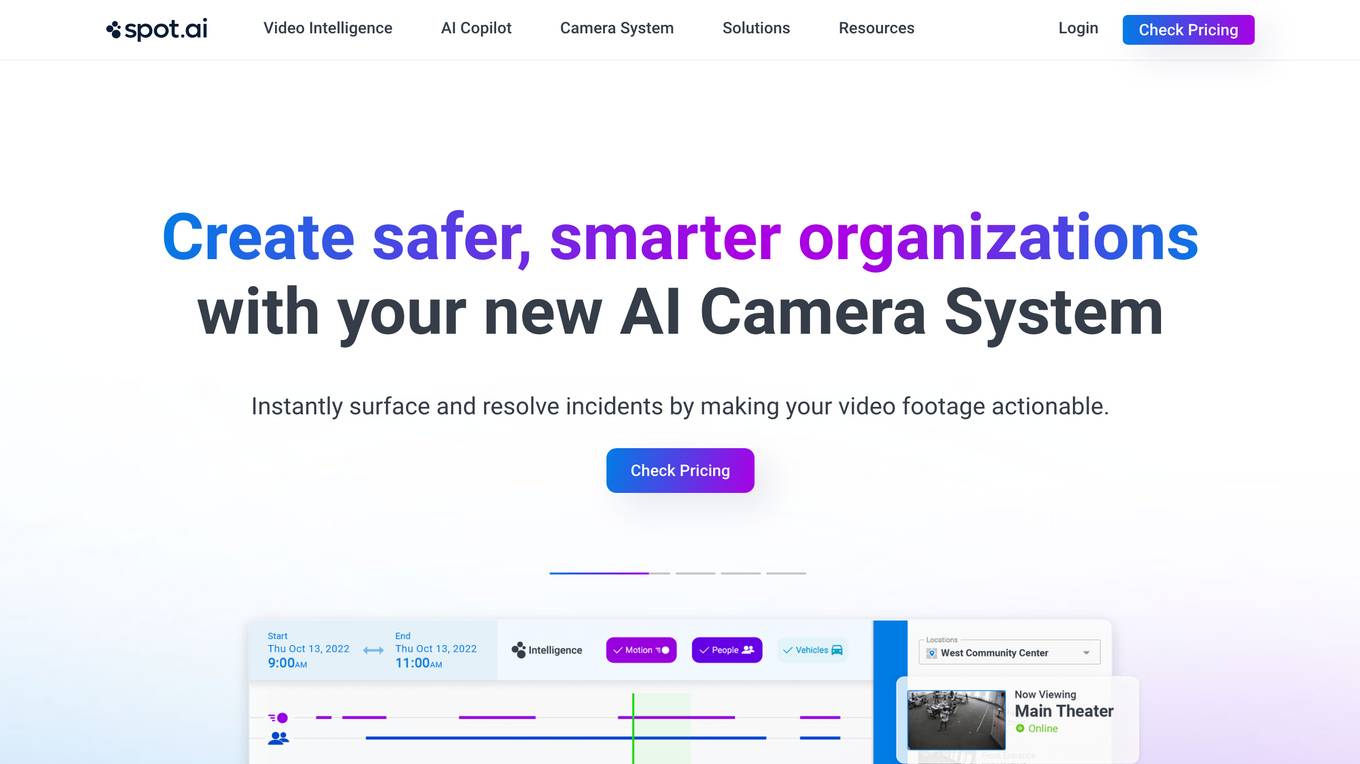
Spot AI
Spot AI is an AI camera system and video surveillance platform that offers AI Security Guard and AI Operations Assistant services. It provides extra protection without the payroll, scales the best operators, and deploys AI agents to standardize operations, coach teams, and execute real-time actions. The platform converts critical moments into context-rich judgments, launches automatic actions, and allows users to analyze, dissect, grade, and relay video content in seconds. Spot AI offers premium cameras, cloud dashboard for incident resolution, and intelligent video recording with on-edge AI processing. It helps enhance safety, efficiency, and productivity across various industries.
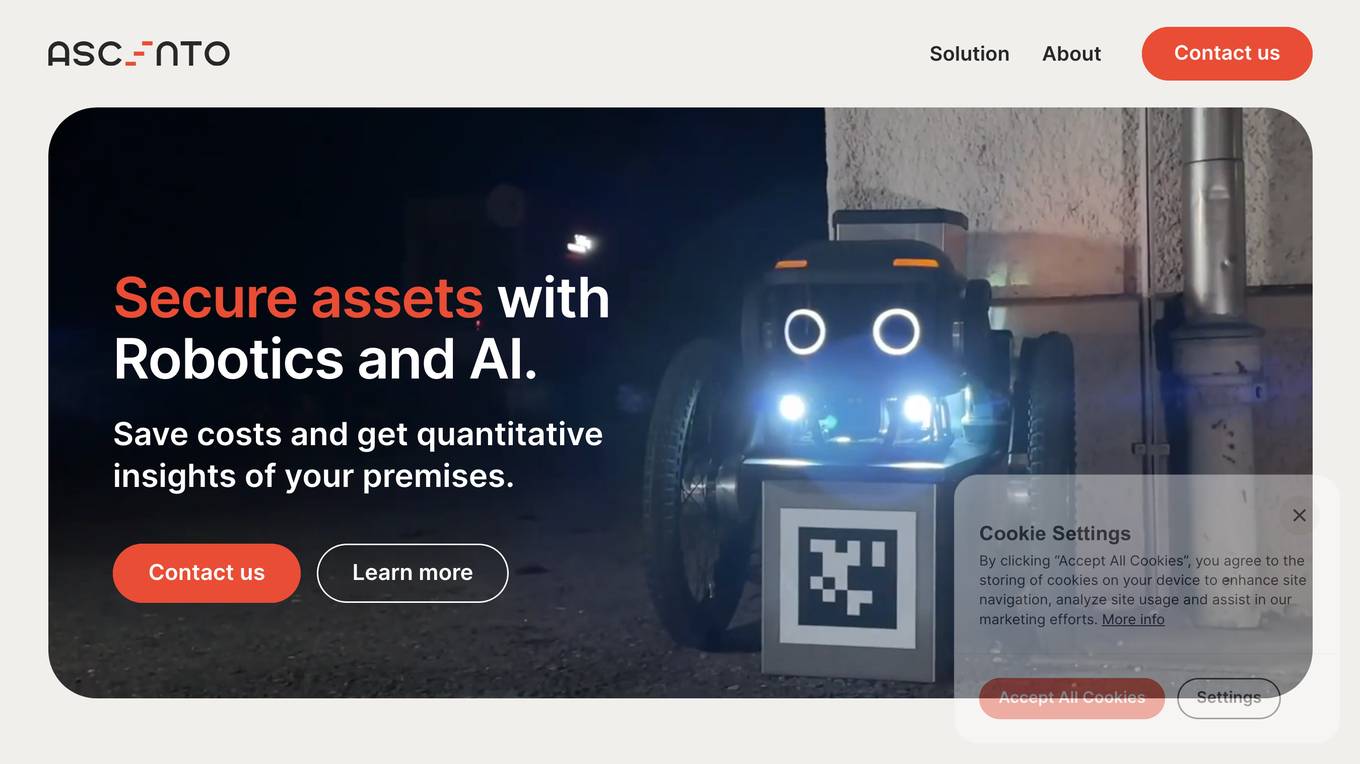
Ascento
Ascento is an AI-powered security solution that combines robotics and artificial intelligence to secure assets and provide quantitative insights of premises. The application offers features such as detecting people on premises, verifying perimeter integrity, recording property lights, scanning for thermal anomalies, controlling parking lots, and checking doors and windows. Ascento provides advantages like faster threat detection with greater accuracy, cost reduction, autonomous all-terrain robot capabilities, encrypted live communication, and integration with existing video management systems. However, some disadvantages include the need for immediate cost-benefits, training and onboarding requirements, and limited battery life for autonomous charging. The application is suitable for various industries and offers a turnkey solution with 24/7 support and fast replacements.
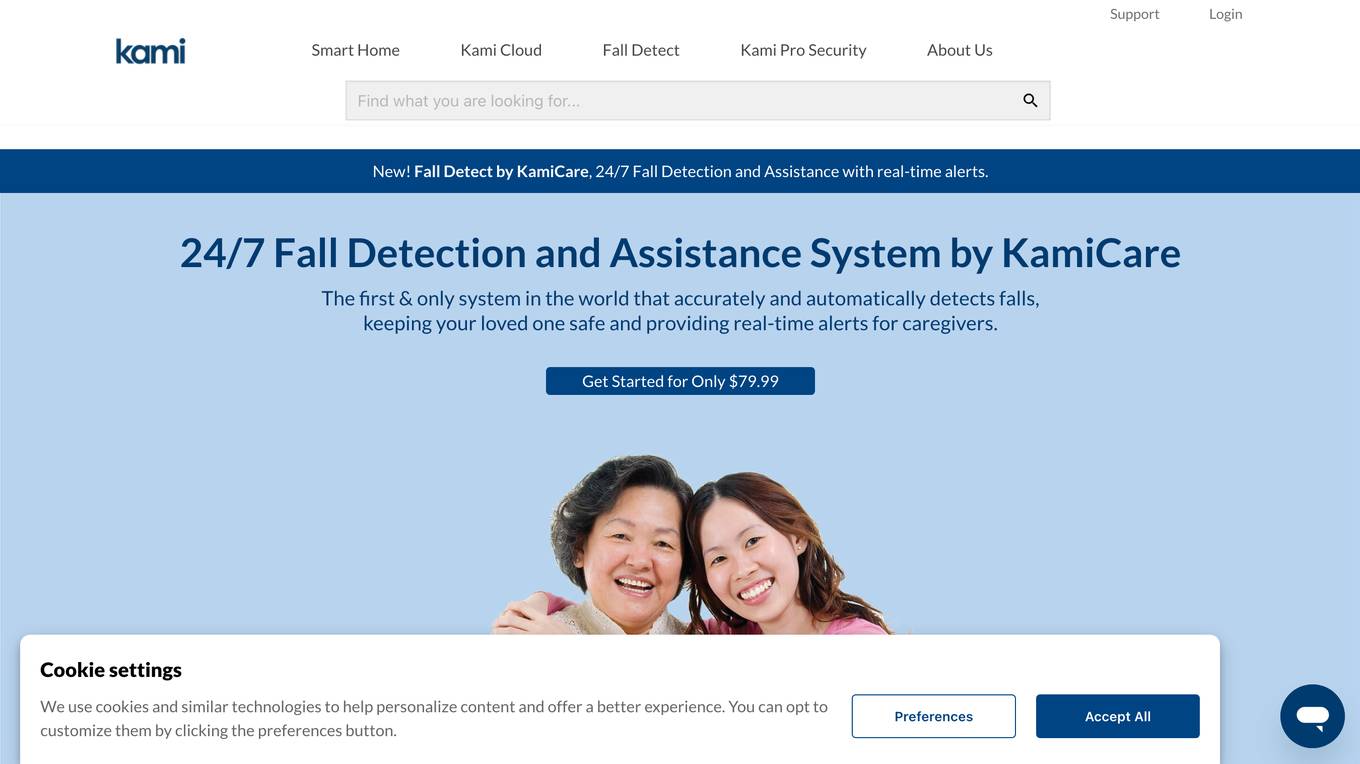
Kami Home
Kami Home is an AI-powered security application that provides effortless safety and security for homes. It offers smart alerts, secure cloud video storage, and a Pro Security Alarm system with 24/7 emergency response. The application uses AI-vision to detect humans, vehicles, and animals, ensuring that users receive custom alerts for relevant activities. With features like Fall Detect for seniors living at home, Kami Home aims to protect families and provide peace of mind through advanced technology.
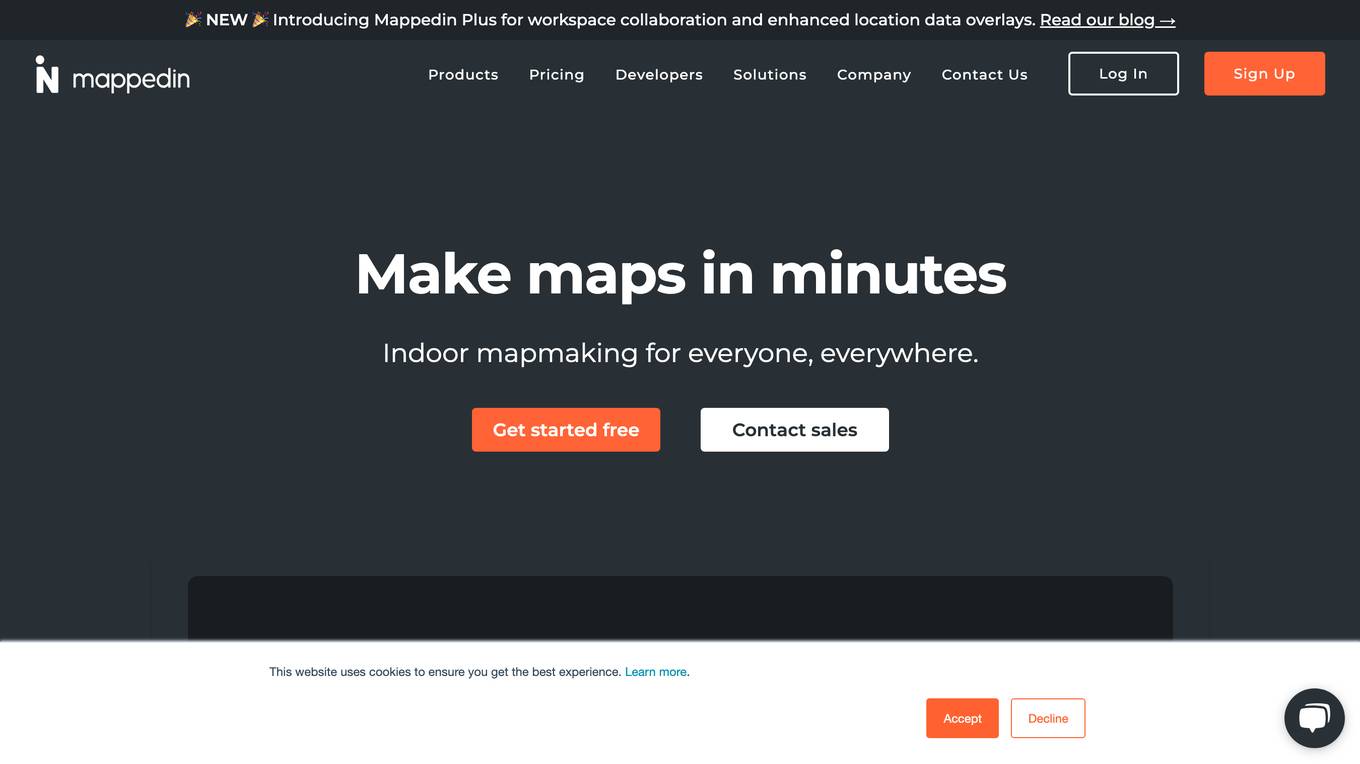
Mappedin
**Mappedin** is an indoor mapping platform that allows users to create and publish interactive 3D maps of indoor spaces. The platform uses AI to automate the process of map creation, making it easy for users to create accurate and up-to-date maps of their indoor spaces. Mappedin maps can be used for a variety of purposes, including wayfinding, asset tracking, and space planning.
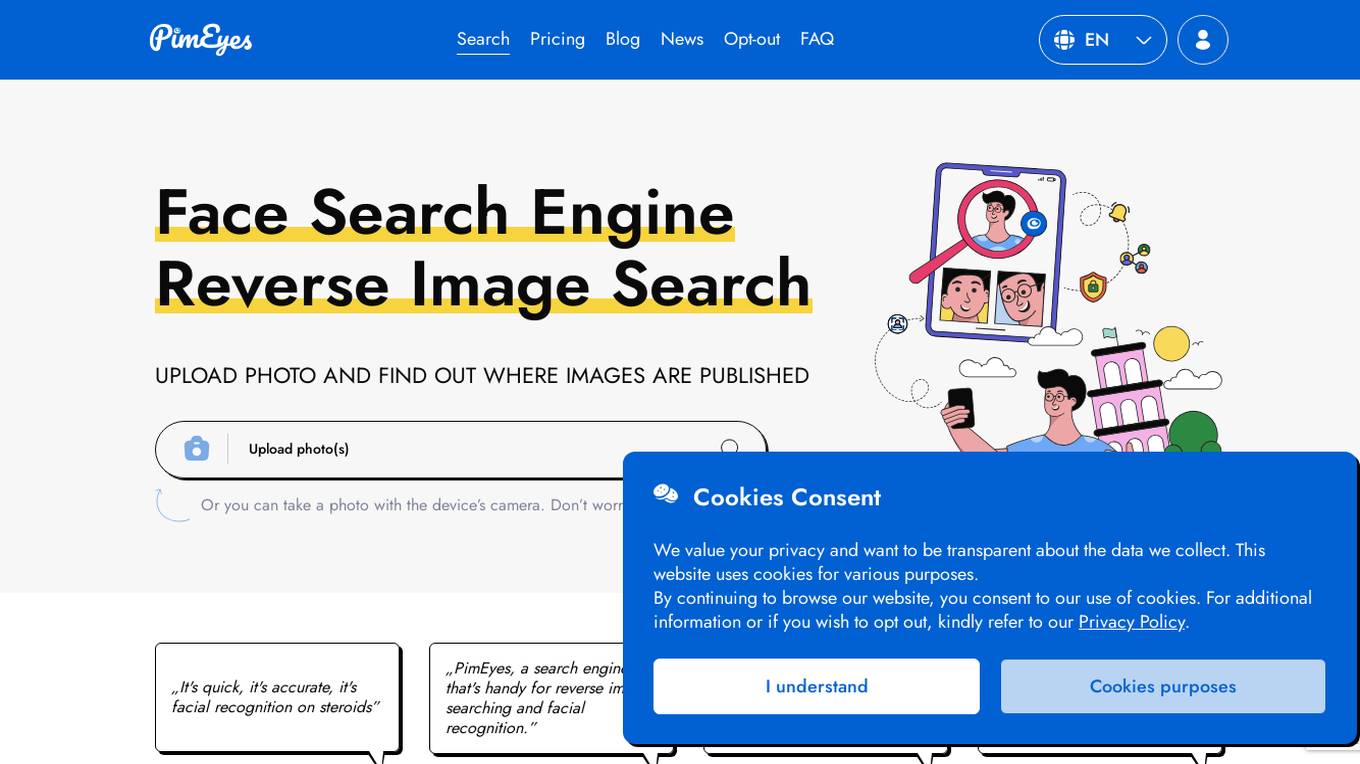
PimEyes
PimEyes is an online face search engine that uses face recognition technology to find pictures containing given faces. It is a great tool to audit copyright infringement, protect your privacy, and find people.
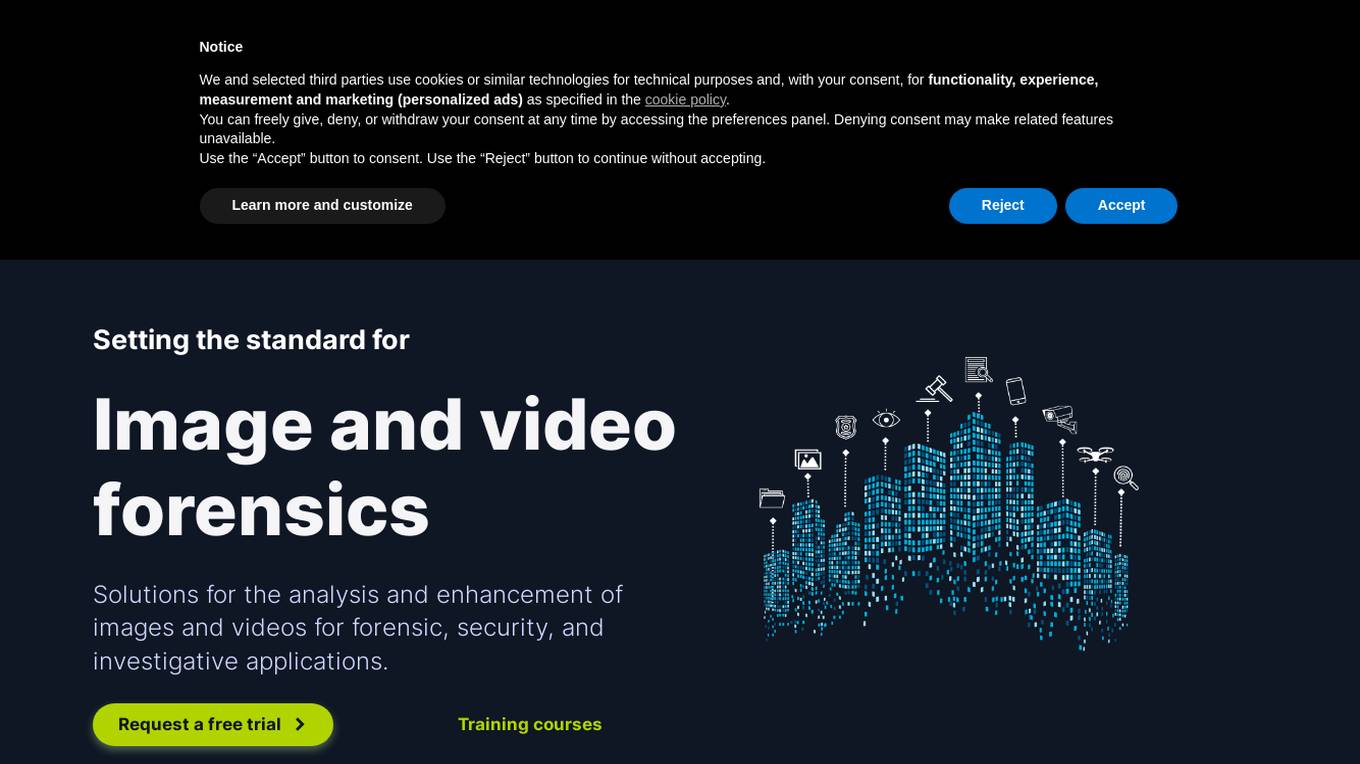
Amped Software
Amped Software develops solutions for the analysis and enhancement of images and videos for forensic, security, and investigative applications. Their tools are used by top forensic labs, law enforcement, military, security, and government agencies worldwide.
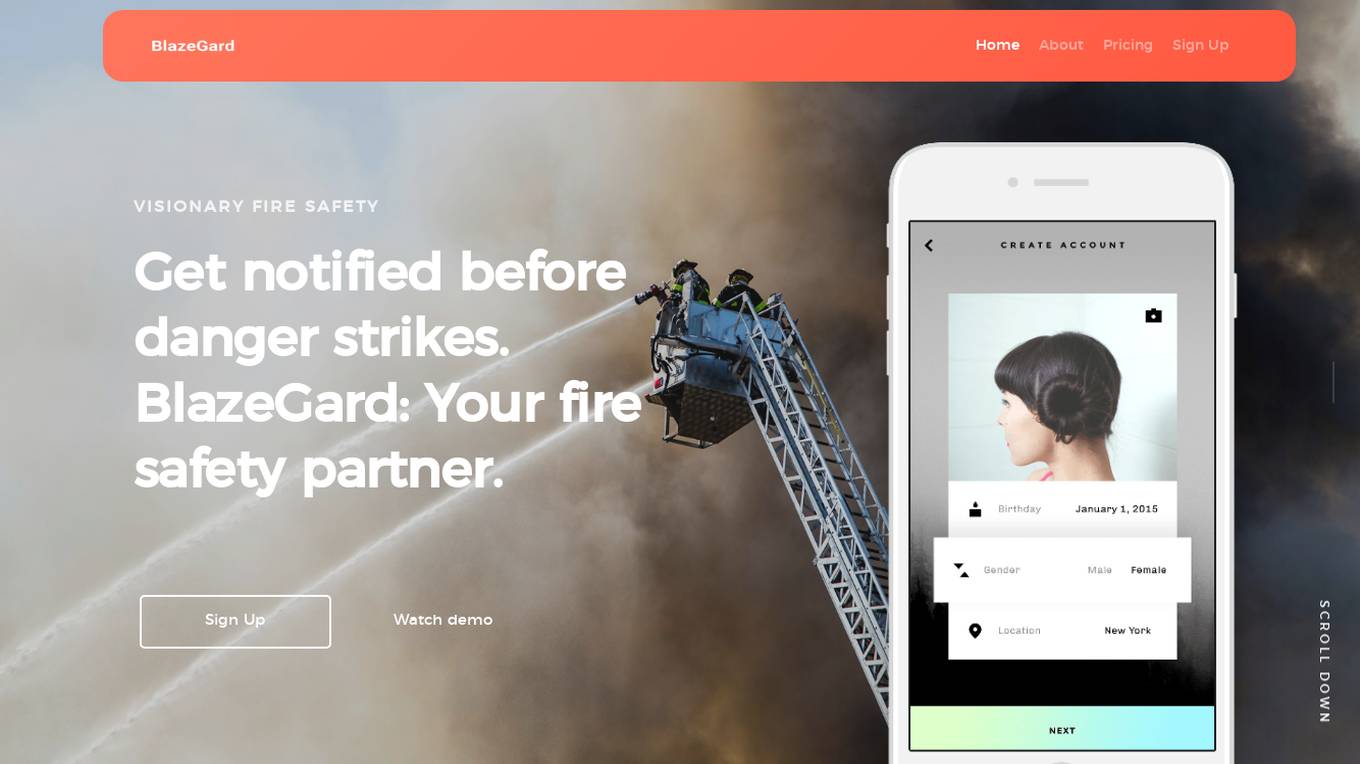
BlazeGard
BlazeGard is an AI-powered fire safety application that utilizes cutting-edge object detection technology to analyze video feeds in real-time, identifying potential fire hazards and smoke before flames erupt. It offers comprehensive protection for homes, businesses, and industrial facilities, going beyond traditional smoke detectors. BlazeGard provides early detection, real-time alerts, and peace of mind through its proactive approach to fire safety.

BuddyAI
BuddyAI is a personal AI companion designed to provide support and comfort through human-like conversations, especially during vulnerable moments like walking home alone at night. It offers a direct line to signal for help, empowering users with conversation and assistance 24/7. The application aims to make users feel safer, less anxious, and more confident in navigating through less secure environments.
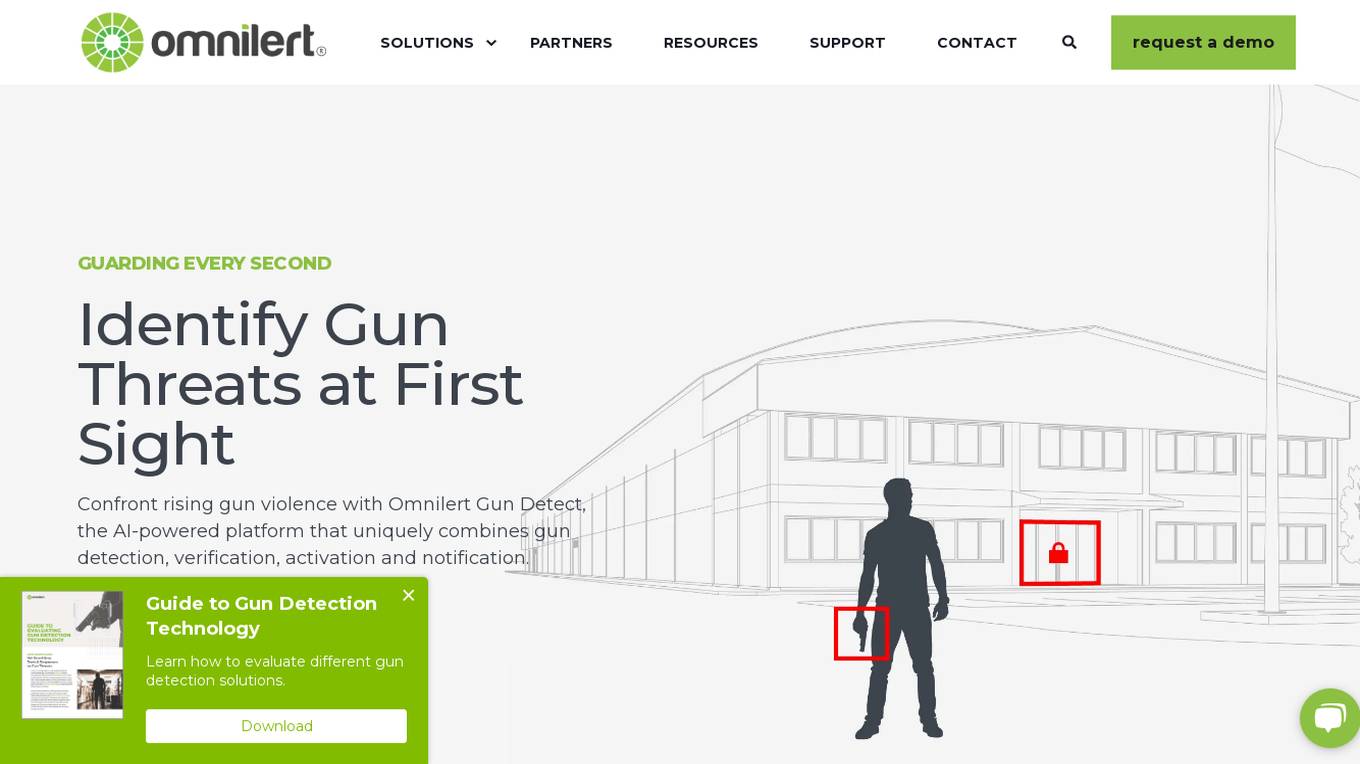
Omnilert
Omnilert is an AI-powered platform that provides active shooter protection and emergency communications solutions. It offers gun detection technology, emergency response automation, and real-time monitoring to help organizations respond swiftly to threats and keep people safe. With a focus on maximizing every critical second, Omnilert revolutionizes safety across various industries by combining AI-powered monitoring software with human verification. The platform is trusted by thousands of customers worldwide for its accuracy, low false positive rate, and innovative approach to safeguarding people, facilities, and operations.

FaceConnect
FaceConnect is a Face Recognition Person and Access Control Management System developed by Innovation Plus Co., Ltd. It offers a centralized system for managing personnel data and controlling access using facial recognition technology. The system enhances workplace security and convenience by eliminating the need for physical ID cards. FaceConnect is designed to streamline time and attendance management in organizations through AI technology, providing efficient and secure access control solutions. The application is popular for its advanced features and high efficiency in face recognition technology.
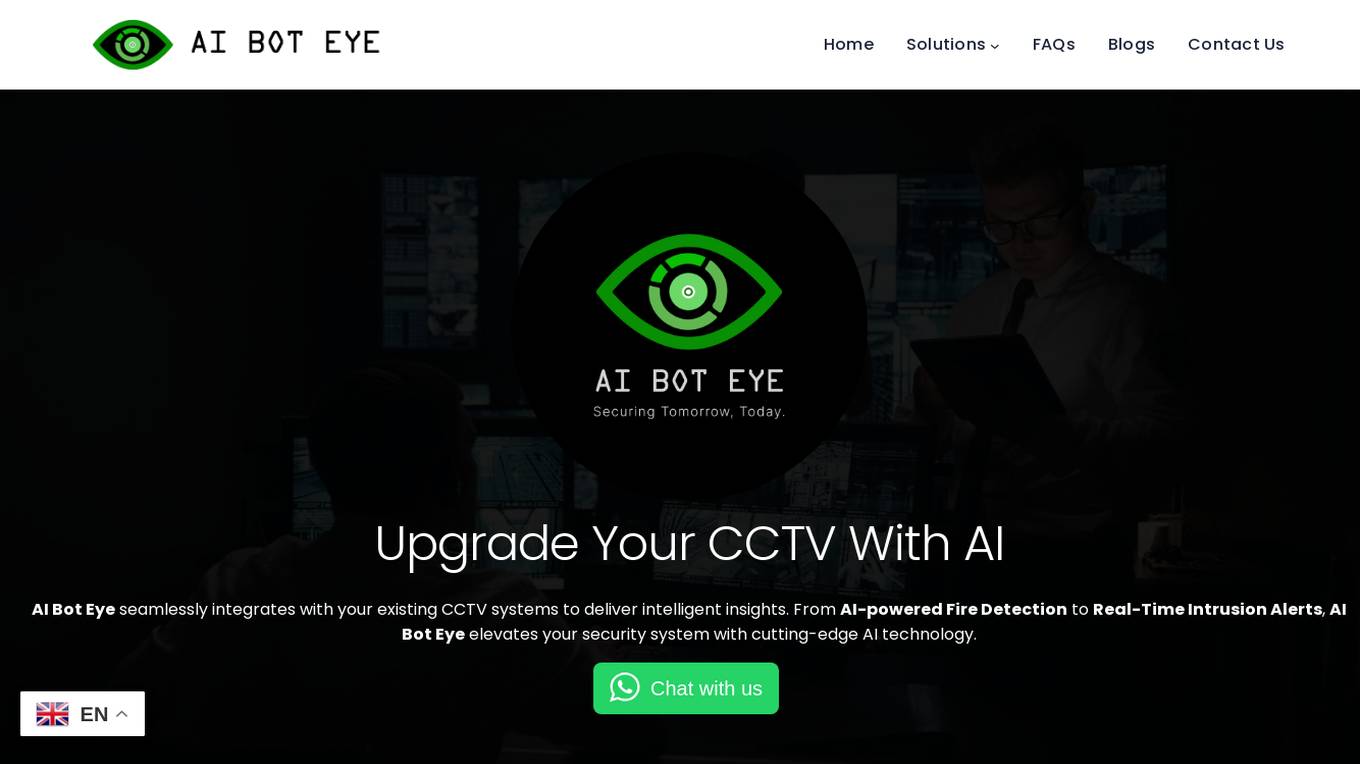
AI Bot Eye
AI Bot Eye is an AI-based security system that seamlessly integrates with existing CCTV systems to deliver intelligent insights. From AI-powered Fire Detection to Real-Time Intrusion Alerts, AI Bot Eye elevates security systems with cutting-edge AI technology. The application offers features such as Intrusion Detection, Face Recognition, Fire and Smoke Detection, Speed Cam Mode, Safety Kit Detection, HeatMaps Insights, Foot Traffic Analysis, and Numberplate recognition. AI Bot Eye provides advantages like real-time alerts, enhanced security, efficient traffic monitoring, worker compliance monitoring, and optimized operational efficiency. However, the application has disadvantages such as potential false alarms, initial setup complexity, and dependency on existing CCTV infrastructure. The FAQ section addresses common queries about the application, including integration, customization, and compatibility. AI Bot Eye is suitable for jobs such as security guard, surveillance analyst, system integrator, security consultant, and safety officer. The AI keywords associated with the application include AI-based security system, CCTV integration, intrusion detection, and video analytics. Users can utilize AI Bot Eye for tasks like monitor intrusion, analyze foot traffic, detect fire, recognize faces, and manage vehicle entry.
4 - Open Source Tools
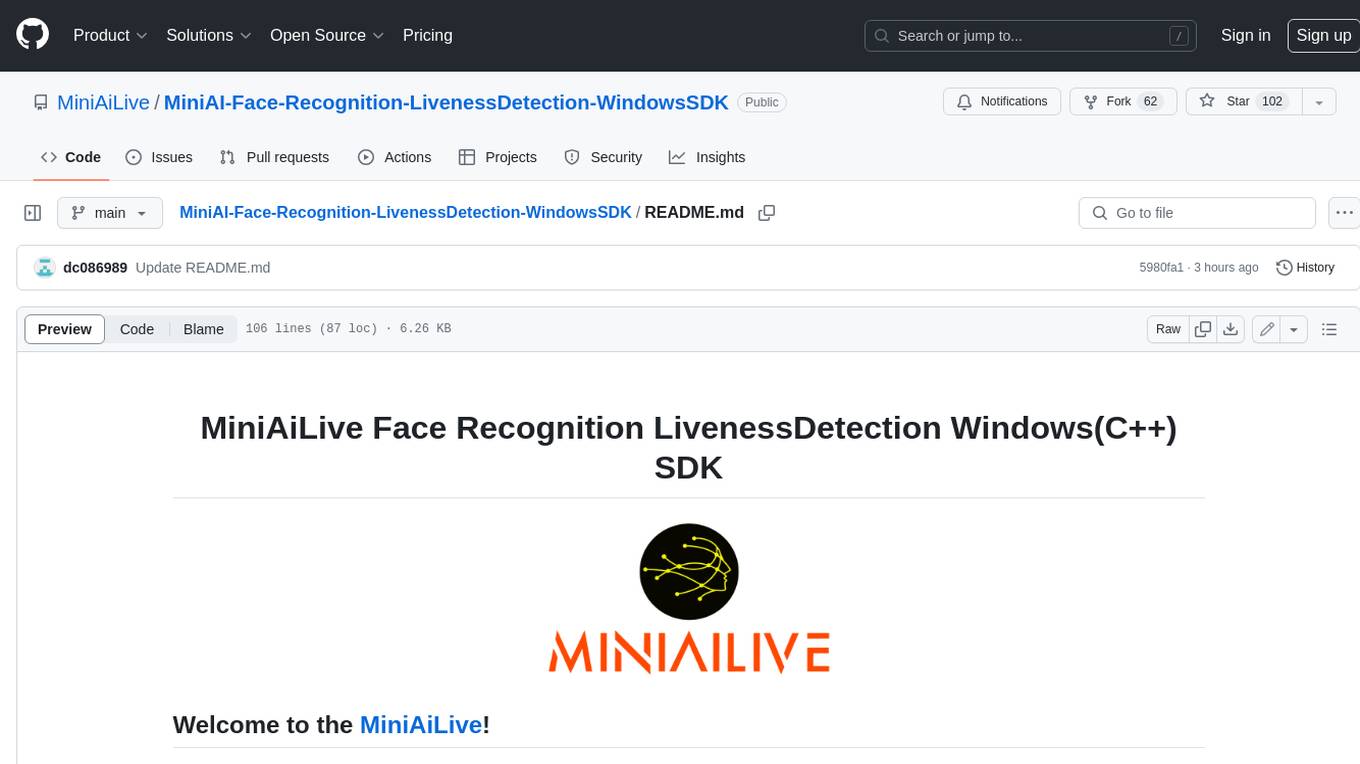
MiniAI-Face-Recognition-LivenessDetection-WindowsSDK
This repository contains a C++ application that demonstrates face recognition capabilities using computer vision techniques. The demo utilizes OpenCV and dlib libraries for efficient face detection and recognition with 3D passive face liveness detection (face anti-spoofing). Key Features: Face detection: The SDK utilizes advanced computer vision techniques to detect faces in images or video frames, enabling a wide range of applications. Face recognition: It can recognize known faces by comparing them with a pre-defined database of individuals. Age estimation: It can estimate the age of detected faces. Gender detection: It can determine the gender of detected faces. Liveness detection: It can detect whether a face is from a live person or a static image.
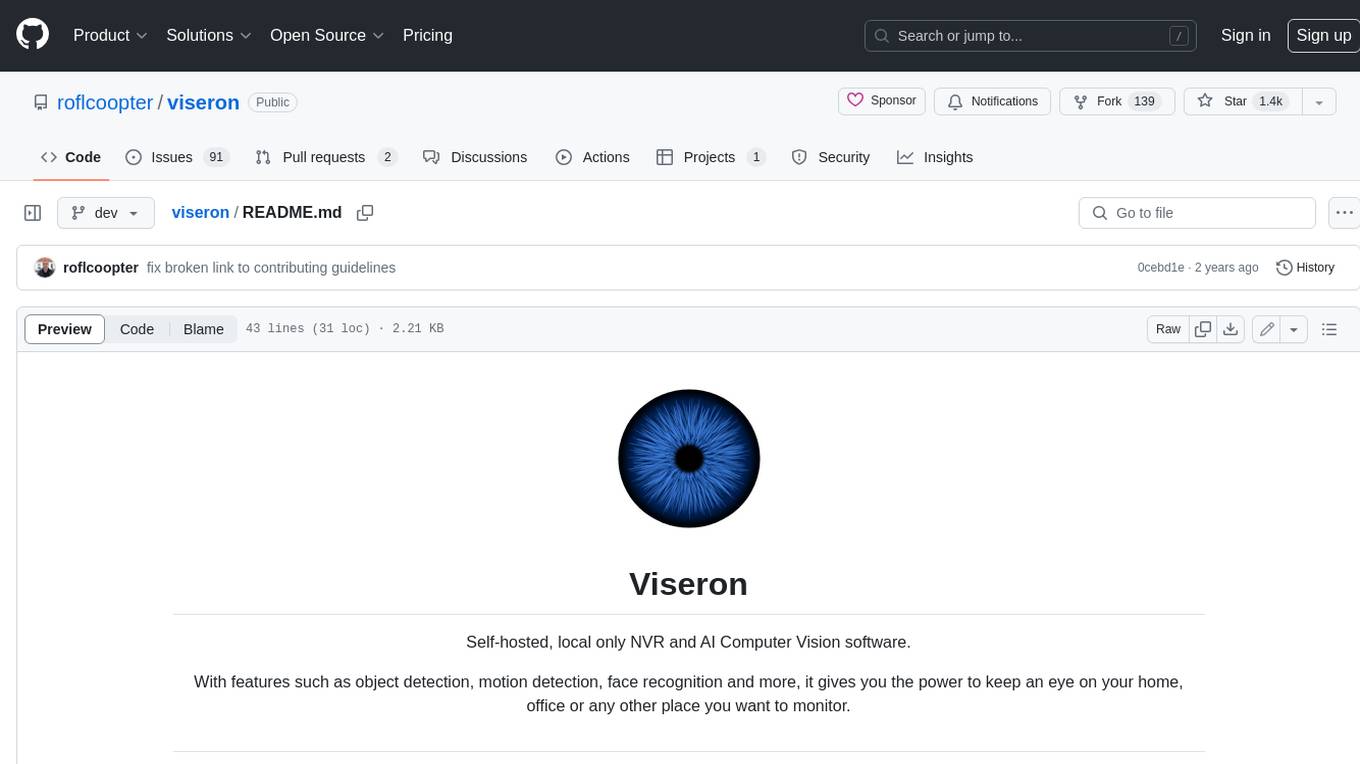
viseron
Viseron is a self-hosted, local-only NVR and AI computer vision software that provides features such as object detection, motion detection, and face recognition. It allows users to monitor their home, office, or any other place they want to keep an eye on. Getting started with Viseron is easy by spinning up a Docker container and editing the configuration file using the built-in web interface. The software's functionality is enabled by components, which can be explored using the Component Explorer. Contributors are welcome to help with implementing open feature requests, improving documentation, and answering questions in issues or discussions. Users can also sponsor Viseron or make a one-time donation.

persian-license-plate-recognition
The Persian License Plate Recognition (PLPR) system is a state-of-the-art solution designed for detecting and recognizing Persian license plates in images and video streams. Leveraging advanced deep learning models and a user-friendly interface, it ensures reliable performance across different scenarios. The system offers advanced detection using YOLOv5 models, precise recognition of Persian characters, real-time processing capabilities, and a user-friendly GUI. It is well-suited for applications in traffic monitoring, automated vehicle identification, and similar fields. The system's architecture includes modules for resident management, entrance management, and a detailed flowchart explaining the process from system initialization to displaying results in the GUI. Hardware requirements include an Intel Core i5 processor, 8 GB RAM, a dedicated GPU with at least 4 GB VRAM, and an SSD with 20 GB of free space. The system can be installed by cloning the repository and installing required Python packages. Users can customize the video source for processing and run the application to upload and process images or video streams. The system's GUI allows for parameter adjustments to optimize performance, and the Wiki provides in-depth information on the system's architecture and model training.
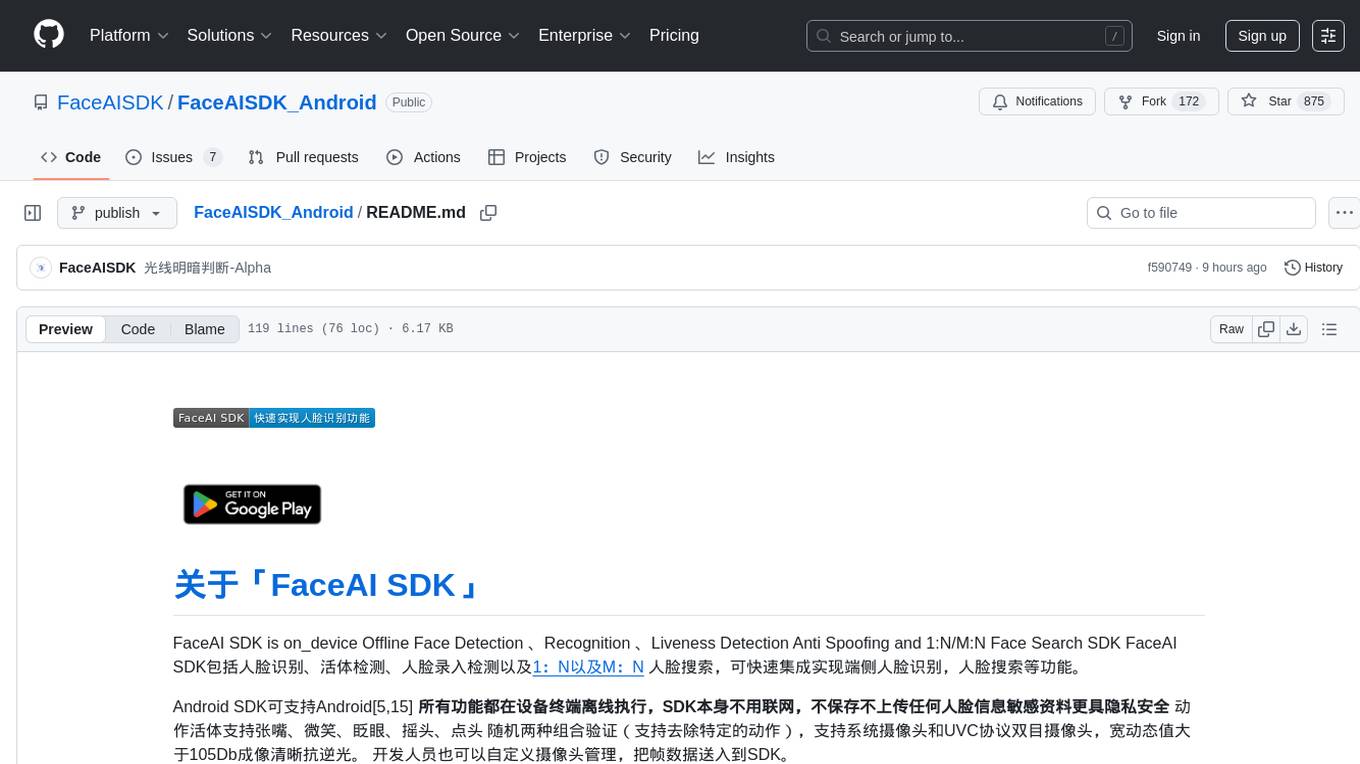
FaceAISDK_Android
FaceAI SDK is an on-device offline face detection, recognition, liveness detection, anti-spoofing, and 1:N/M:N face search SDK. It enables quick integration to achieve on-device face recognition, face search, and other functions. The SDK performs all functions offline on the device without the need for internet connection, ensuring privacy and security. It supports various actions for liveness detection, custom camera management, and clear imaging even in challenging lighting conditions.
21 - OpenAI Gpts
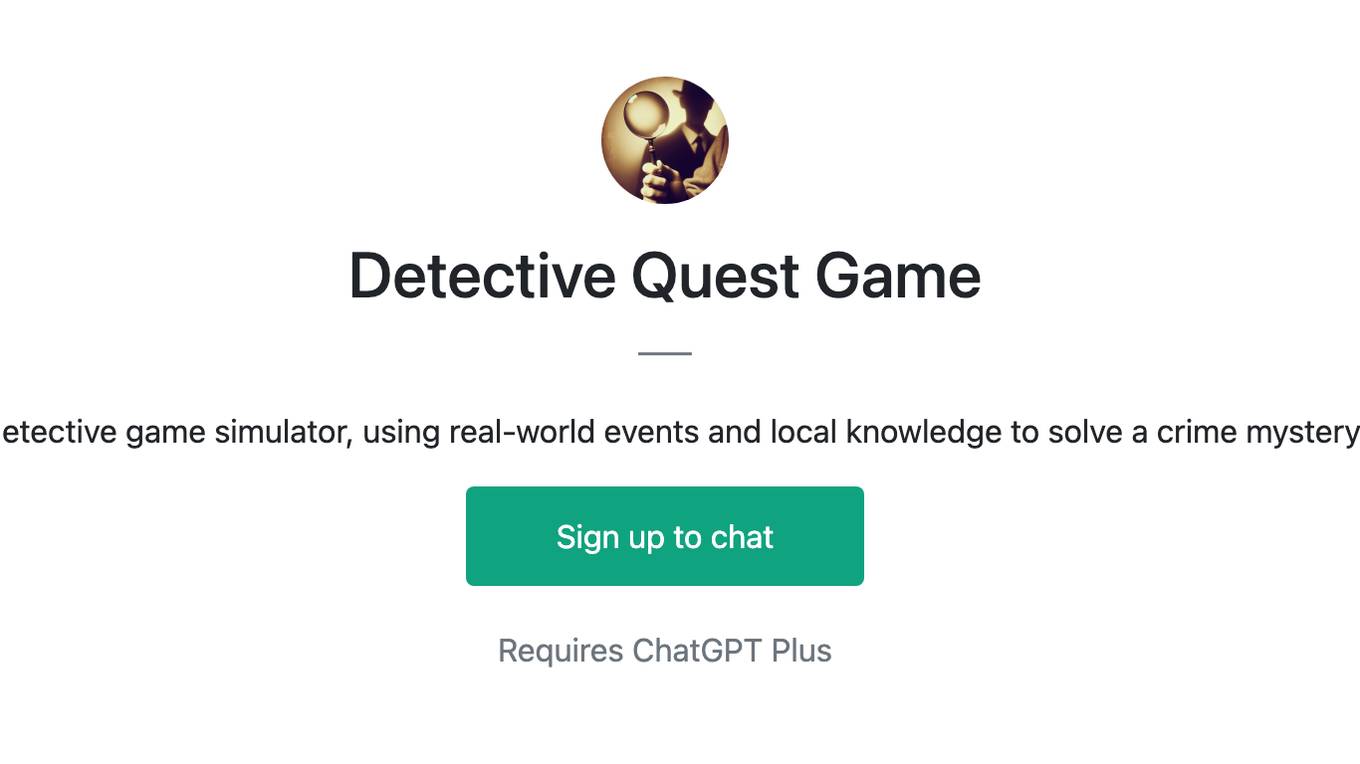
Detective Quest Game
A detective game simulator, using real-world events and local knowledge to solve a crime mystery..
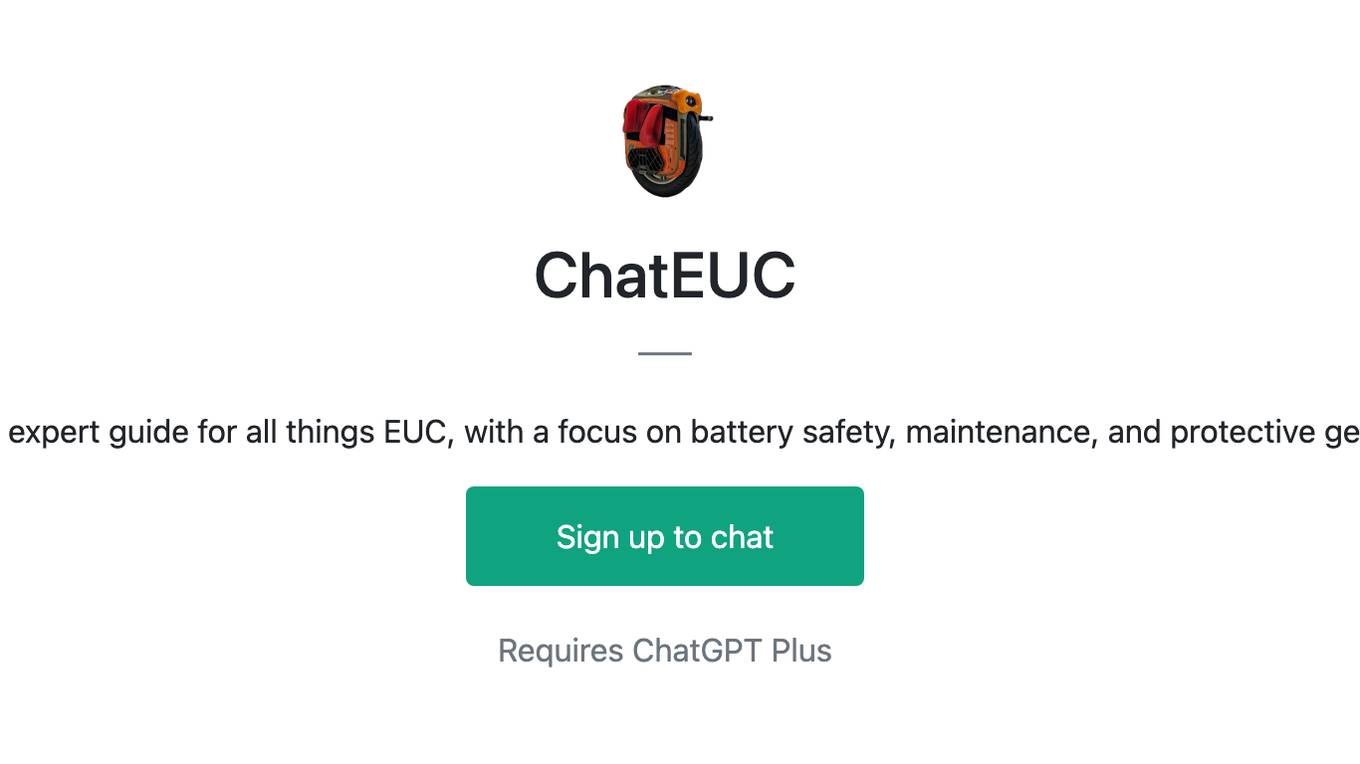
ChatEUC
Your expert guide for all things EUC, with a focus on battery safety, maintenance, and protective gear.

Whodunit guessing game
Who let the dogs out? Who stole your favorite toy? Who moved my cheese? Let’s find out!

Détective Virtuel
Incarne un détective sur une scène de crime, enquêtes, trouves des indices et deviens le nouveau Sherlock Holmes . 3 Niveaux de difficulté.

EDC Self Defense Weapons
EDC Self Defense Weapons: Information or guidance on what constitutes EDC self-defense weapons. This can include lists of recommended items, explanations of their practicality, legality, and effectiveness.
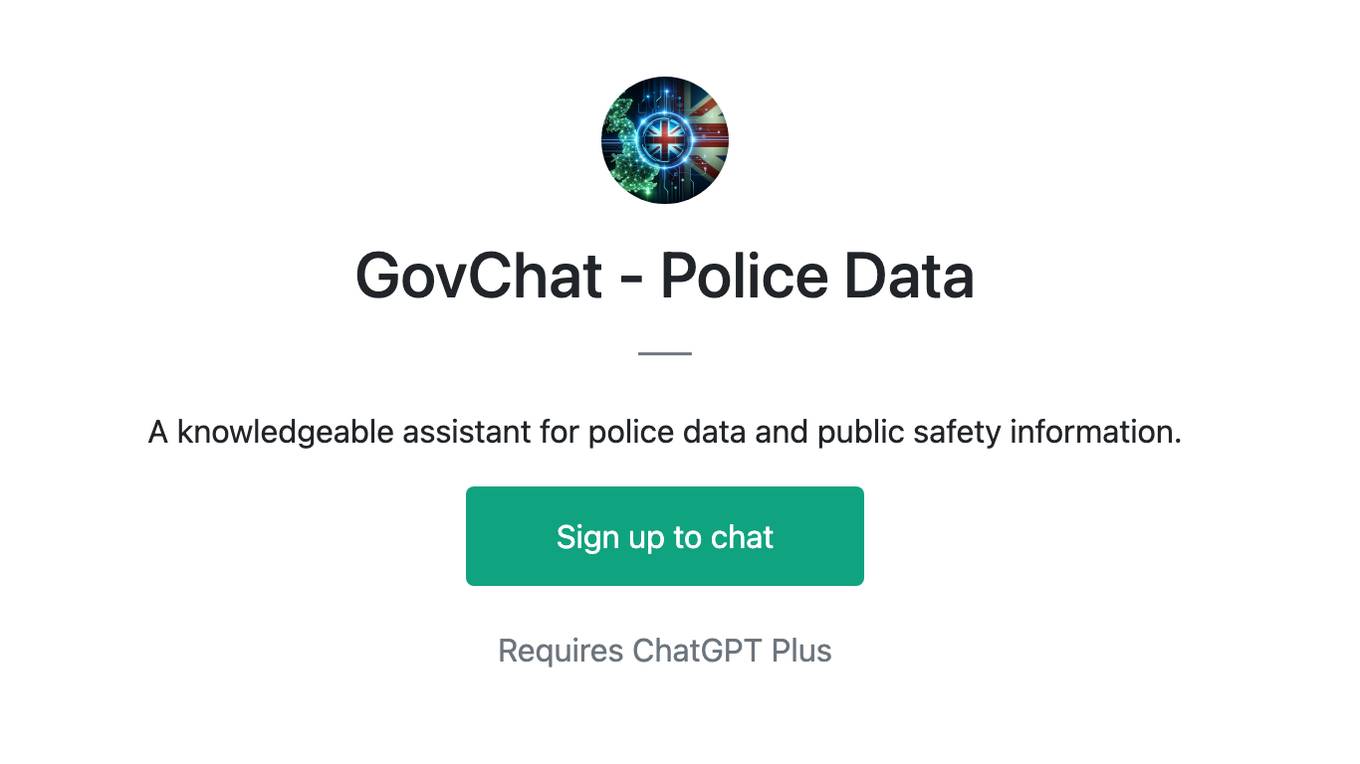
GovChat - Police Data
A knowledgeable assistant for police data and public safety information.
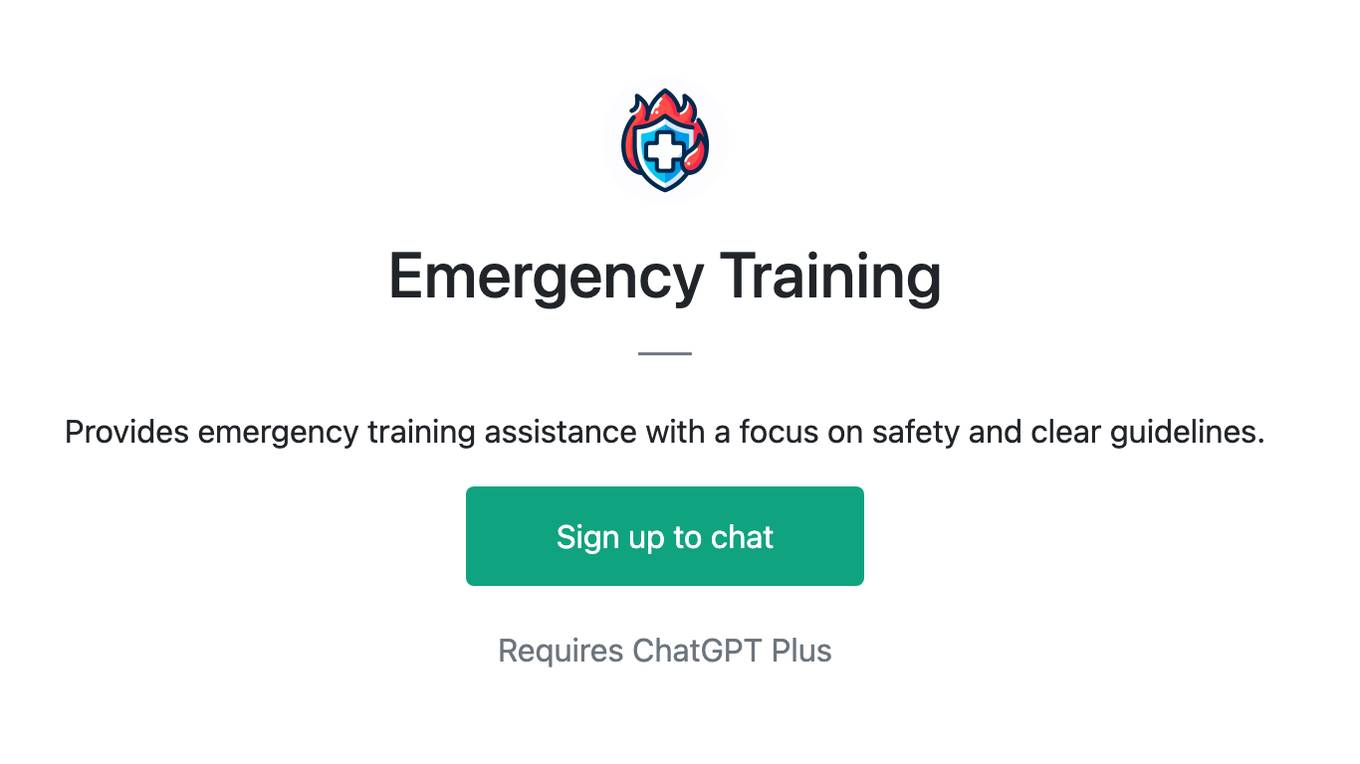
Emergency Training
Provides emergency training assistance with a focus on safety and clear guidelines.
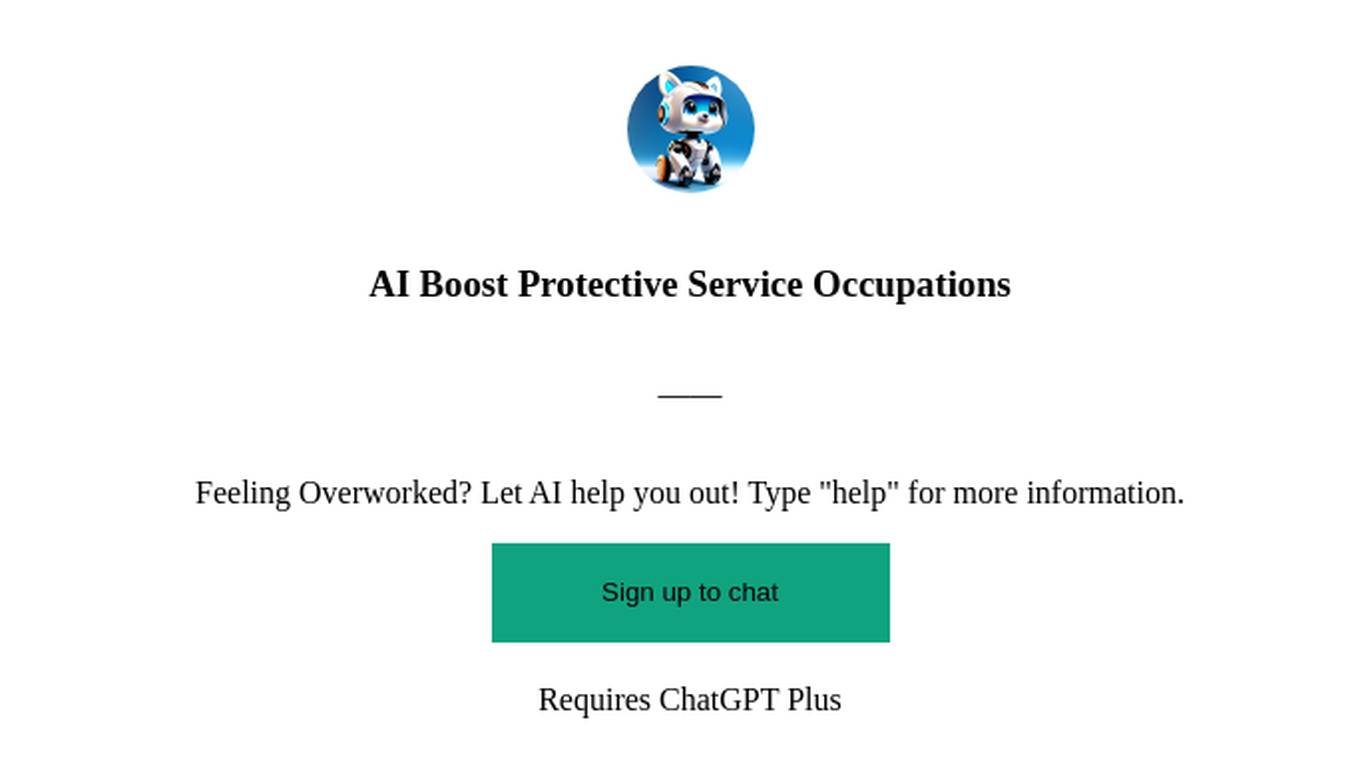
AI Boost Protective Service Occupations
Feeling Overworked? Let AI help you out! Type "help" for more information.


